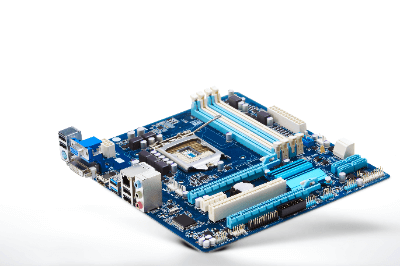What Is a Central Processing Unit (CPU) Board?

A Central Processing Unit (CPU) Board is a board on which a system controller chip and its peripheral devices are mounted to control the system.
Since commonly used peripheral devices are mounted on the board, in most cases, software design can be started immediately, eliminating the need to design a dedicated board. In some cases, the necessary device drivers and OS are also provided, so once software design is complete, the software can be implemented on the Central Processing Unit (CPU) Board and commercialized as-is.
Furthermore, a dedicated board can be designed by removing unnecessary hardware. Thus, the advantage of Central Processing Unit (CPU) Board is that it allows for quick and easy system development.
Uses of Central Processing Unit (CPU) Board
Central Processing Unit (CPU) Board is used as a controller for consumer equipment in which a single-chip microcontroller is mounted, as well as for larger-scale business systems.
1. Factory Automation
Central Processing Unit (CPU) Boards play a central role in factory automation equipment. These devices are designed to improve production efficiency. Central Processing Unit (CPU) Board optimizes machine operation by controlling various sensors and actuators. In addition, since real-time data processing is required, high-speed and high-performance Central Processing Unit (CPU) Boards are required.
2. Retail Industry
POS cash registers are indispensable systems for sales management and inventory control in the retail industry, and Central Processing Unit (CPU) Board must be able to quickly perform complex processing in conjunction with peripheral devices such as barcode scanners and printers.
Long hours of continuous operation and energy efficiency are also important factors, so durable and efficient Central Processing Unit (CPU) Boards are used.
3. Medical Care
Central Processing Unit (CPU) Board is required to have high reliability because medical equipment handles critical information that may affect patients’ lives. For example, accurate and high-speed data processing is essential for diagnostic imaging devices and electrocardiographs, and high-quality Central Processing Unit (CPU) Boards are used.
4. Security
Surveillance equipment, such as security cameras and access control systems, require real-time video and data analysis. For this reason, Central Processing Unit (CPU) Boards with high-speed and stable processing capability are used, contributing to improved performance of surveillance equipment.
Principle of Central Processing Unit (CPU) Board
1. Hardware
A Central Processing Unit (CPU) Board, whether a single-chip microcontroller or a CPU board with a general-purpose CPU, contains memory, drive units such as HDD/CD-ROM and their control devices, USB drivers, serial interface drivers, Ethernet drivers, and HDMI interface drivers. In addition, many devices that are not built into the microcontroller but are often used in system development, such as USB drivers, serial I/F drivers, Ethernet drivers, HDMI I/F drivers, and AD/DA converters, are implemented on the board.
2. Software
Generally, an OS, device drivers for peripheral devices, and firmware are provided to operate the microcontroller, CPU, and peripheral devices on the Central Processing Unit (CPU) Board. As for OSs for single-chip microcontrollers, μIRON-based OSs are the mainstream, in addition to proprietary OSs provided by chip vendors. On the other hand, Windows, Linux, and Android are commonly used OSs for general-purpose CPUs.
How to Select a Central Processing Unit (CPU) Board
When selecting a Central Processing Unit (CPU) Board, consider the following factors:
1. Purpose and Performance
Clarify the purpose for which the Central Processing Unit (CPU) Board will be used and the performance required. For example, it is important to select a Central Processing Unit (CPU) Board with the appropriate performance for your application, such as IoT devices, robot control, image processing, etc.
2. Processor
The type and performance of the on-board processor is an important factor in selecting a Central Processing Unit (CPU) Board. Processors are available in ARM, x86, MIPS, RISC-V, and other architectures. Choose according to the required processing power, application, and power consumption.
3. Memory
The Central Processing Unit (CPU) Board contains RAM and ROM (flash memory). Select a board with sufficient memory capacity according to the requirements of your project.
4. Input/Output Interface
Central Processing Unit (CPU) Board has GPIO (General Purpose Input/Output), UART (Universal Asynchronous Receiver/Transmitter), I2C (Inter-Integrated Circuit), SPI (Serial Serial Peripheral Interface (SPI), USB, Ethernet, Wi-Fi, Bluetooth, etc. Select a board with the interface required for your project.
5. Power Supply
The Central Processing Unit (CPU) Board is powered by a battery or external power supply. It is important to select a board that is suitable for the power supply used in your project.
6. Size
The size of the Central Processing Unit (CPU) Board is also a factor in selection. For projects that need to fit into a limited space, a board with a smaller size is appropriate.
7. Operating System and Development Environment
If strict real-time performance is required, select a Central Processing Unit (CPU) Board with a real-time OS or a development environment that allows development without an OS. If an application that can only run on a specific OS is required, choose based on the application requirements.